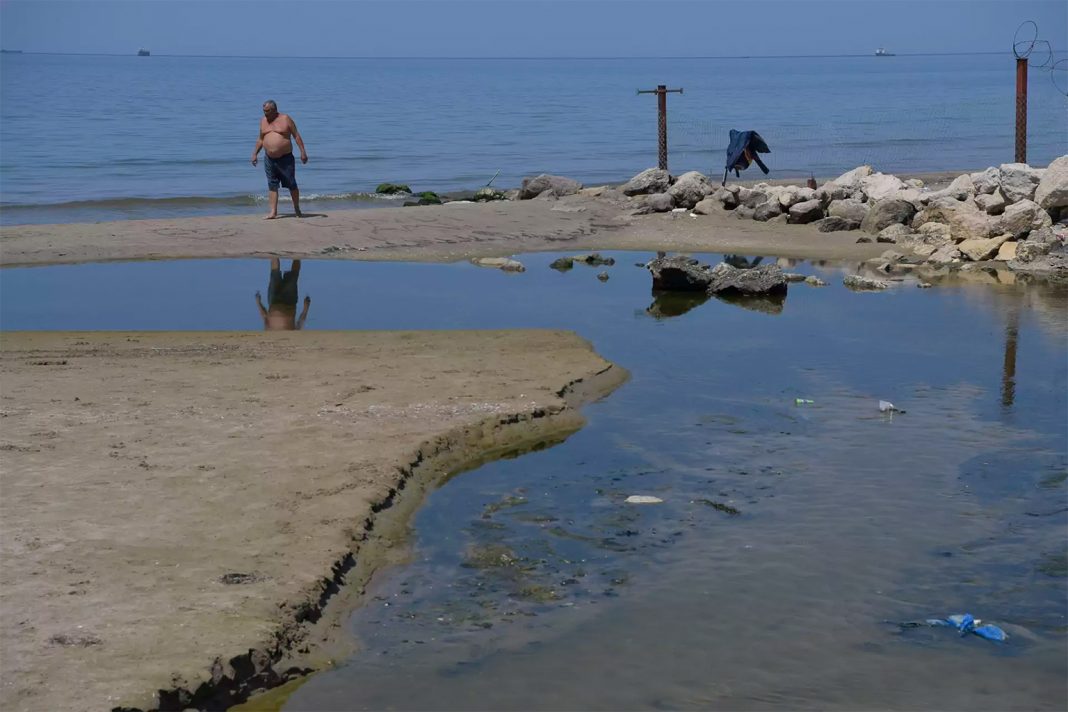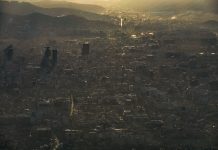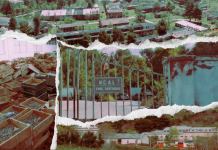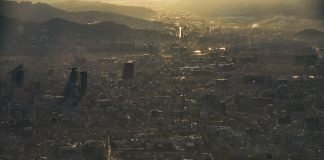By Esmeralda Topi | Photos: Atdhe Mulla
A photo report from the coast of Durrës, where holidaymakers face visible and hazardous pollution while trying to enjoy an early summer. Untreated sewage continues to flow openly into the sea, in full view of both visitors and authorities. Environmental experts and local activists are raising alarms about an early crisis that worsens every year.
In the shadow of the port
June started with record temperatures, as if it were August. An early summer crowded with beachgoers, tourists, heat waves, and… black water.
On Monday, June 9, I was at Porto Romano with photographer Atdhe Mulla, one of the most polluted coastal points in Albania according to the National Environment Agency. In this port-industrial neighborhood on the outskirts of Durrës, pollution has long been an issue due to sewage discharges.
At the entrance of the port, access is limited, but at a hidden spot behind the cargo terminals, untreated urban sewage is discharged without any treatment. The discharge pipe is no longer visible to the naked eye, but its presence is strongly felt by the nose. A heavy smell, a mixture of garbage and methane, is immediately noticeable as soon as you approach the area.
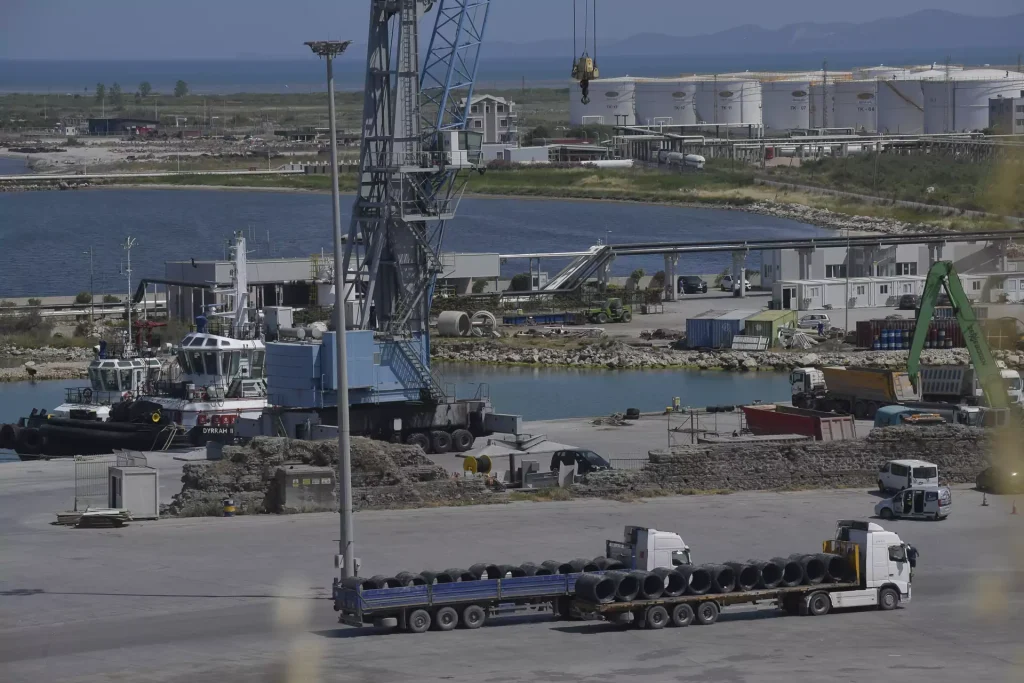
“The main contributor to pollution of coastal bathing waters remains the discharge of untreated urban wastewater directly and indirectly into the receiving coastal waters, which causes pollution of these waters'” The National Environment Agency warns in its latest report.
We climb a low hill where several one and two-story houses overlook the port, with quiet yards and windows facing the sea. From this vantage point, through the camera lens, we can identify the area where the sewage is discharged. The color of the water changes. It’s an unmistakable visual sign of pollution that cannot be hidden by the wind or the sunlight.
According to the National Environment Agency (NEA), the situation at Porto Romano has been out of control for years. Monitoring there shows that levels of suspended solids, microorganisms, and organic pollutants have exceeded allowed limits.
‘The main contributor to pollution of coastal bathing waters remains the discharge of untreated urban wastewater directly and indirectly into the receiving coastal waters, which causes pollution of these waters’ the National Environment Agency reiterates in its recent report.
The Urban Irony of Touristic Vollga
From the outskirts, the journey continues toward the tourist heart of Durrësi, the Vollga area. The ‘Taulantia’ promenade is among the most visited places by both local and foreign visitors. However, the pipeline discharging polluted water in this area is exposed emptying directly into the sea without any attempt at concealment.
This pipeline discharges untreated wastewater from Neighborhood 1, where hotels, restaurants, and tourism businesses are located.
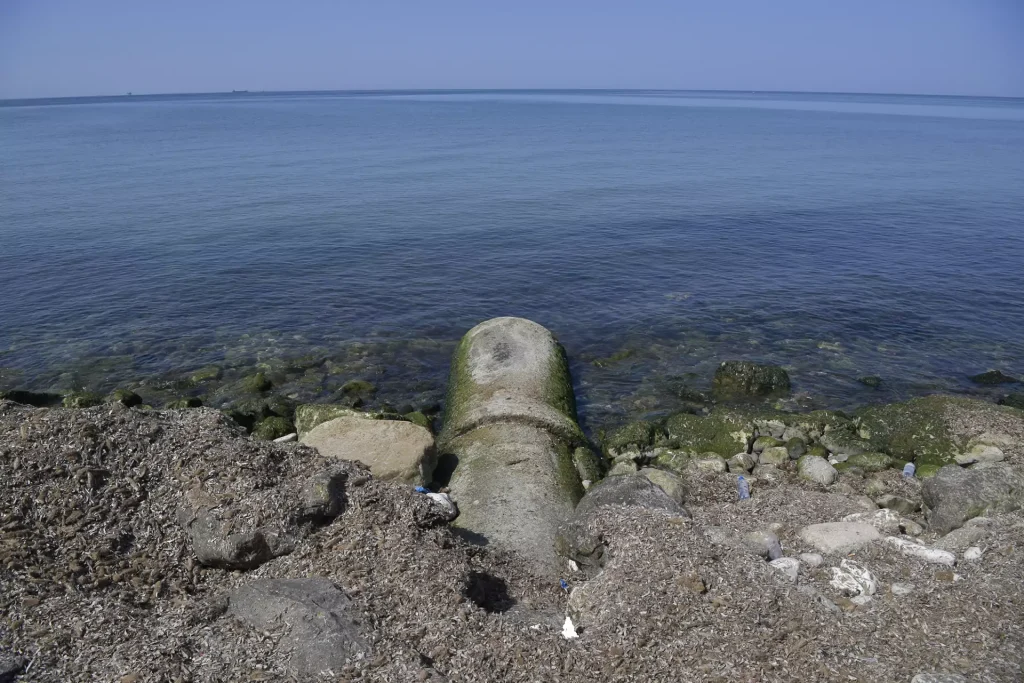
The sand is blanketed with black clumps of seaweed, forming small dunes, like scars along the shoreline. The color of the water changes distinctly near the pipe. Still, no one appears alarmed.
Just a few meters from the pipe, on this hot June day, we find elderly beachgoers enjoying the sea. One man with a white hat swims calmly, while another lies along the shore sunbathing with his head covered.
The discharge pipe in the heart of Durrës is not an isolated incident. The city faces multiple hotspots where used waters are released directly into the sea, without any prior treatment.
‘The entire sewage network hasn’t kept pace with the city’s growth and expansion. The water and sewerage system has received various funds over the years, mainly from the World Bank but also from European partners, totaling more than 100 million euros. And despite these investments, we can say that only a portion of the beach area is fully connected to the wastewater treatment plant. Meanwhile, in the city’s inner and peripheral areas, much of the sewage network remains unconnected to the treatment system and thus drains directly into Durrës’ coast’ explains Geri Emiri, director of the Amfora Center in Durrës.
Agai Stream: A Flow of Pollution
We end our one-day journey at the area known as Agai Stream, in Plepat, Durrës. It’s a Monday, yet the beach is packed with hundreds of visitors. In front of them, a wide, open, and polluted channel pours directly into the sea.
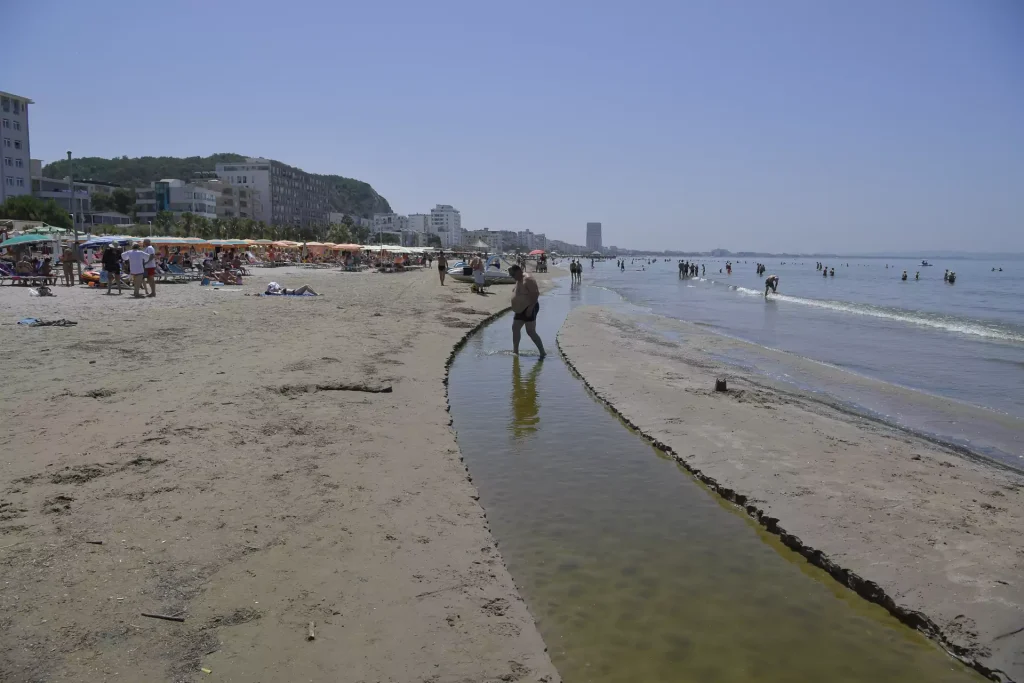
‘All that green lining the shore is sea lettuce, scientifically named Ulva lactuca, and it’s the clearest, fastest, and most accurate sign of high levels of organic pollution, mostly nitrates and phosphates, which come from untreated wastewater discharges’, explains environmental expert Olsi Nika from EcoAlbania.
The water is murky, but that doesn’t stop people from swimming. Among them is Astrit Seferi, 64, originally from Korça, who has lived in Durrës for thirty years. We find him lying on a beach chair, listening to folk music playing softly from a small speaker. Just a few meters to his right is the drainage canal.
‘I know it’s not very clean, but where else can I go?’ he says with a calm smile, as the June sun beats down on the sand.

Astrit is a painter. He spends his afternoons making portraits for both local and foreign tourists. That’s why he uses his mornings to sunbathe and swim. ‘I pick different places, but today I came here because parking was easy’, he says.
A bit further along the shore, children jump into the sea with joyful shouts, while others float on plastic inflatables, gently rocking on a water surface that is neither blue nor clean.
According to the Environmental Agency, 53% of the monitoring stations along the beaches of Durrës and Lalzi Bay fall into the poor quality category, Category D, and require immediate measures. Compared to previous years, the monitoring results show a deterioration in these areas. The pollution is no longer just a seasonal or aesthetic concern, but it’s a constant threat to public health, the environment, and the country’s reputation.
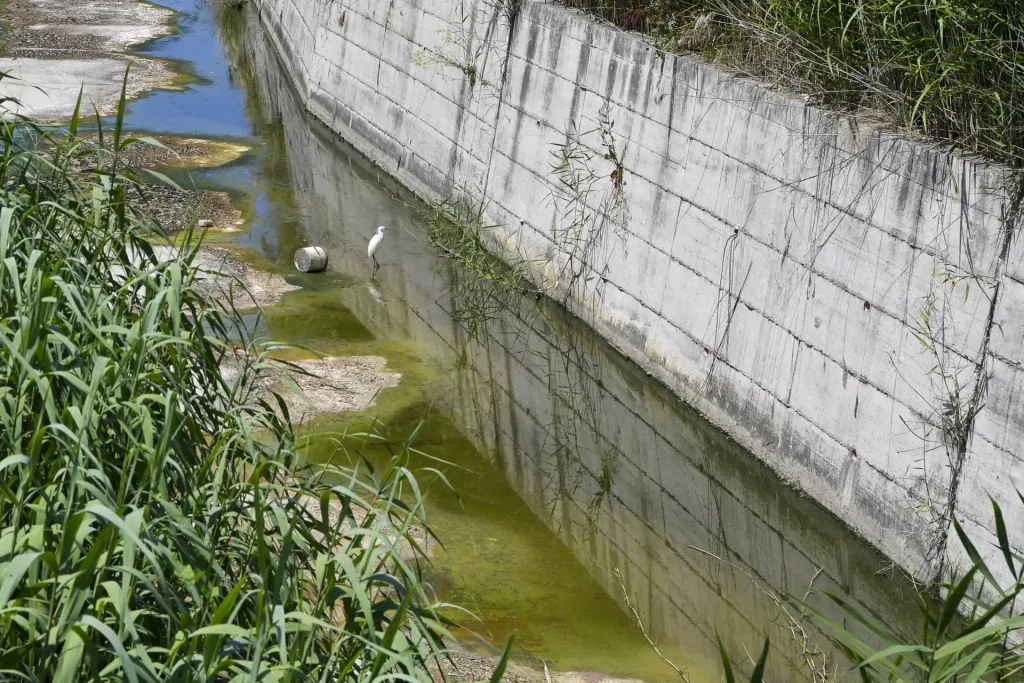
‘The discharge of sewage into the sea primarily harms the tourism image of the city of Durrës, but it also poses a danger of spreading infections to those visitors who want to swim near these areas’, says Geri with sadness, a journalist and activist from Durrës who has been following this issue for years.
The government has declared tourism as one of the main priorities for economic development. Last year, over 11 million visitors were recorded in Albania, with even higher expectations this year. However, environmental challenges such as coastal water pollution threaten to undermine this potential. Experts warn that without serious interventions to improve wastewater infrastructure and enforce environmental standards, the natural beauty could become a source of disappointment for tourists.

